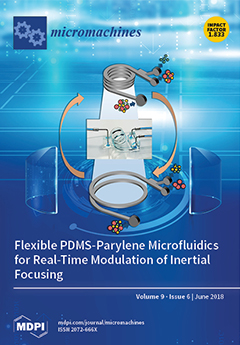Despite the fact that two-dimensional layered magnetic materials hold immense potential applications in the field of spintronic devices, tunable magnetism is still a challenge due to the lack of controllable synthesis. Herein, high-quality single crystals MPS
3 (M= Mn, Fe) of millimeter size
[...] Read more.
Despite the fact that two-dimensional layered magnetic materials hold immense potential applications in the field of spintronic devices, tunable magnetism is still a challenge due to the lack of controllable synthesis. Herein, high-quality single crystals MPS
3 (M= Mn, Fe) of millimeter size were synthesized through the chemical vapor transport method. After systemic structural characterizations, magnetic properties were studied on the bulk MPS
3 layers through experiments, along with first principle theoretical calculations. The susceptibilities as well as the EPR results evidently revealed unique isotropic and anisotropic behavior in MnPS
3 and FePS
3 crystals, respectively. It is worth noting that both of these materials show antiferromagnetic states at measured temperatures. The estimated antiferromagnetic transition temperature is 78 K for bulk MnPS
3 and 123 K for FePS
3 crystals. The spin polarized density functional theory calculations confirmed that the band gap of the antiferromagnetic states could be generated owing to asymmetric response all over the energy range. The ferromagnetic state in MnPS
3 and FePS
3 is less stable as compared to the antiferromagnetic state, resulting in antiferromagnetic behavior. Additionally, frequency-dependent dielectric functions for parallel and perpendicular electric field component vectors, along with the absorption properties of MPS
3, are thoroughly investigated.
Full article






